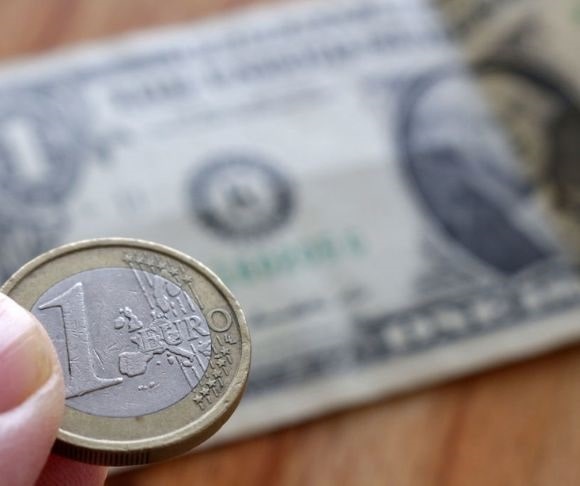
(Photo by Carol Smiljan/NurPhoto via Getty Images)
The global economy is laughing at President Joe Biden. Why else would so many of the nation’s adversaries take advantage of the current situation by employing measures that poke Uncle Sam’s shoulder and leave the United States more vulnerable and less powerful on the world stage? From China to Russia, a plethora of foreign actors is using this opportunity to accelerate particular causes that they had only dreamed of implementing. By the time the current administration is finished – be it in 2024 or 2028 – will a new world order have formed? If so, who will be at the head of the table? One thing is for sure, it will no longer be Washington dictating the terms and conditions of how the globe functions.
Global Economy Abandons America’s Bond Market
For the seventh consecutive month, China reduced its holdings of US debt, falling below $1 trillion for the first time in 12 years, according to new Treasury Department data. With the United States raising interest rates that make Treasurys less attractive and the Chinese government looking to diversify its investments, Beijing dropped its portfolio of US government debt to $980.8 billion in May. This is down approximately $100 billion, or roughly 9%, from the same time a year ago.
Japan is now the world’s largest holder of US Treasury securities, totaling $1.212 trillion. However, Tokyo cut its positions for the third straight month to the lowest level since January 2020. Overall, foreign holdings of US debt tumbled to a one-year low of $7.421 trillion, with multiple countries lowering their exposure to Treasurys: Luxembourg, Ireland, Brazil, Canada, Saudi Arabia, and Australia.
The International Monetary Fund (IMF) released the latest Currency Composition of Official Foreign Exchange Reserves (COFER) data for the first quarter of 2022. The numbers revealed that the US dollar share of global foreign exchange reserves fell below $12 trillion, with the pound sterling, Australian dollar, Canadian dollar, and Swiss franc gaining a greater representation in the global currency market.
Russia Rejects Western Rule

(Photo by Patrick Pleul/picture alliance via Getty Images)
Despite the bombardment of economic sanctions and financial restrictions, Russia has been weathering the storm, particularly in the energy industry. Moscow is poised to make more money from its oil and gas exports than it did before the invasion of Ukraine. Some estimates suggest Russian petroleum sales could reach as much as $321 billion this year, up between 20% and 25% from 2021. The Kremlin generated about $100 billion in revenues from fuel exports in the war’s first 100 days. China, India, and Saudi Arabia are buying more discounted crude oil, averaging about $75 per barrel, according to Russia’s Ministry of Finance. But here is the kicker: Russian output costs are just $4 a barrel. So, even if crude prices were to collapse to $25, President Vladimir Putin could still maintain his war chest.
The broader Russian economy has also done better than economists had anticipated. In May, industrial production tumbled 1.7% year-over-year, better than the market estimate of -5.4%. The S&P Global Manufacturing Purchasing Managers’ Index (PMI) for Russia edged up to 50.9, while the Composite and Services PMI readings returned to expansion territory. Moscow also experienced a bout of deflation in June as the consumer price index (CPI) slid 0.35%. Plus, its foreign exchange reserves still hover around $600 billion, relatively unchanged from when the military conflict started.
Saudi Arabia Lectures America on Energy
As Liberty Nation recently reported, Saudi Arabian Crown Prince Mohammed bin Salman Al Saud gave Biden a fist-bump, some trinkets of oil, and a lecture about green energy. Clearly, Riyadh is looking beyond its friendship with the US and refocusing its efforts on Asia, specifically India and China. This is evident in recent trade data showing that Saudi Arabia’s crude exports are on track to rise to 7.7 million barrels per day (bpd), up from 6.6 million bpd in June. Most of this is due to a significant increase in flows to China, South Korea, Japan, and India. On the other hand, shipments to the US are expected to fall to 333,000 bpd.
India Looking After Its Interests

(Photo by Indranil Aditya/NurPhoto via Getty Images)
India has been flying under the radar as of late, with much of the Western world’s attention on the Ukraine-Russia war, Sri Lanka’s economic collapse, global inflation, and recession woes. This has benefited India considerably, allowing the developing country to bolster its relations with Moscow and expand its economic partnerships with some of America’s adversaries. Reuters is reporting that Russian and Indian refiners are set to trade in crude oil in United Arab Emirates (UAE) dirhams instead of US dollars. This comes only a few months after New Delhi and Moscow established talks to advance a new ruble-rupee trade agreement.
Moreover, this is the second report this year suggesting that countries are thinking about ditching the greenback when trading oil, and using alternative currencies. China and Saudi Arabia are reportedly working on a plan to settle oil contracts in yuan.
What’s Left?
Everything that has happened this year is not entirely surprising. Liberty Nation has been opining about most of these issues for years; it was almost inevitable. But clearly, leaders worldwide, from MBS to President Xi Jinping to Putin, waited for the best opportunity to deploy this de-dollarization and anti-US blitzkrieg. They were patient, choosing to strike when the US government could not afford to stand tall and puff out its chest. With inflation topping 9.1%, an economy on the brink of a recession, and political leadership almost non-existent, a new world order might emerge from the ashes of the pandemic – and the US can sit at the children’s table.
Remember to check out the web’s best conservative news aggregator
Whatfinger.com — the #1 Alternative to the Drudge


